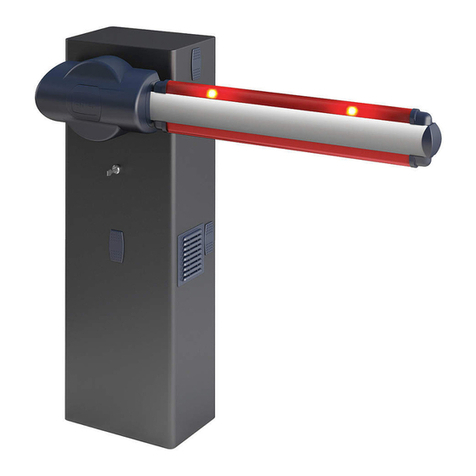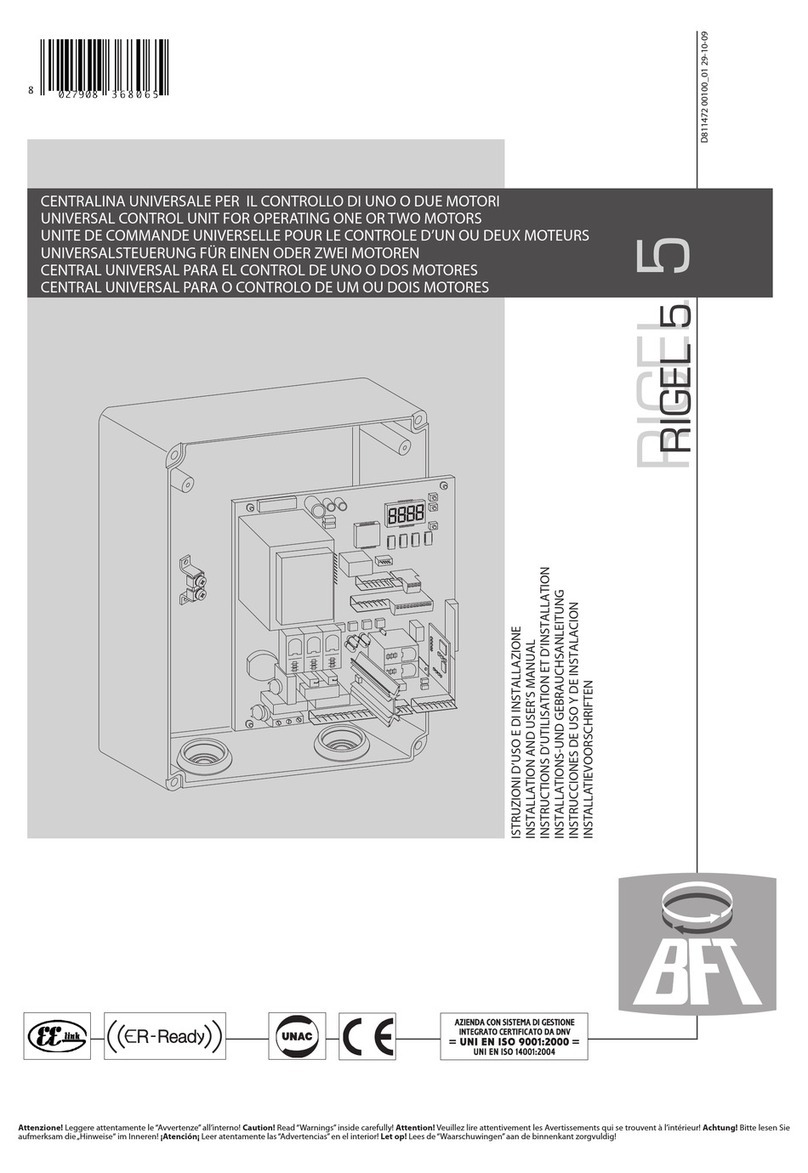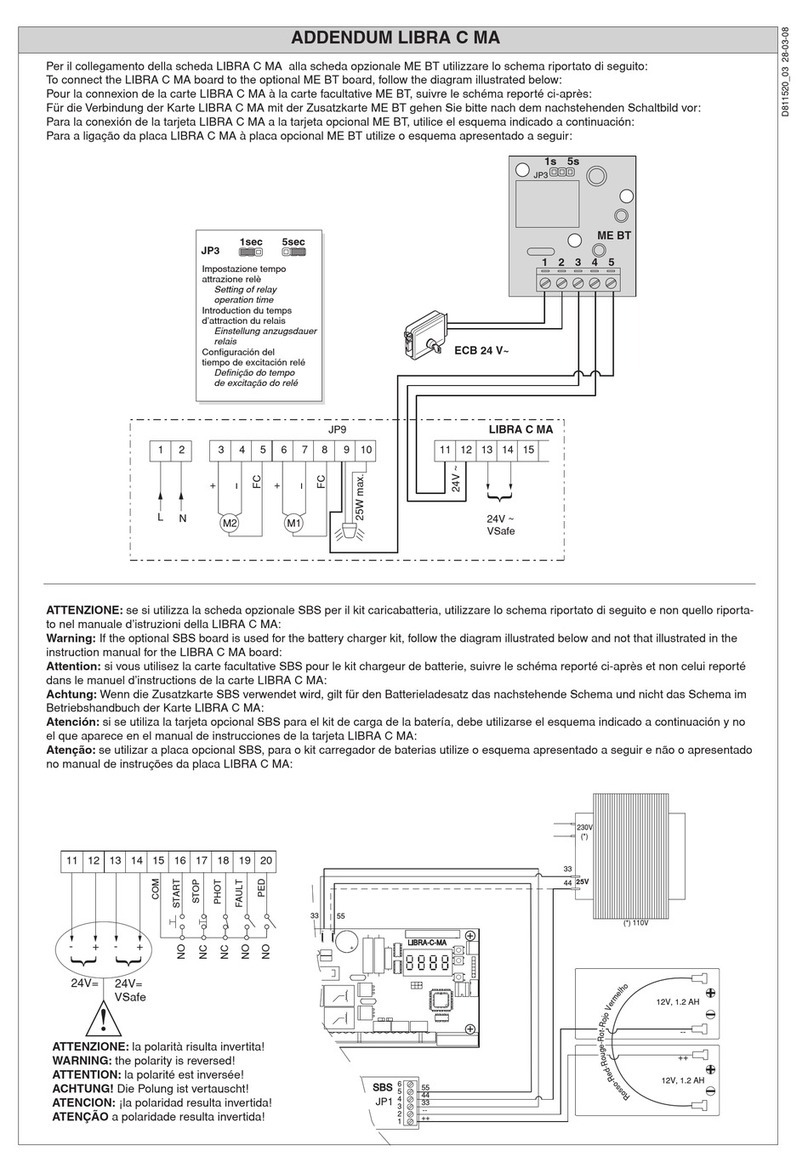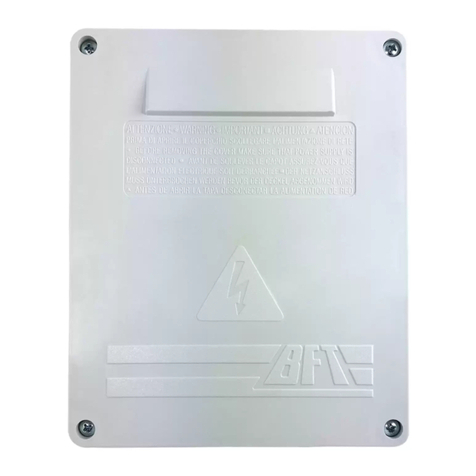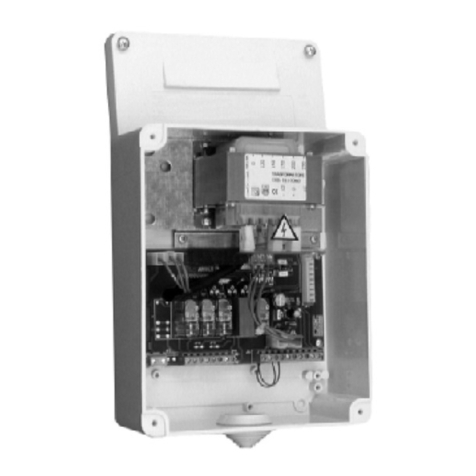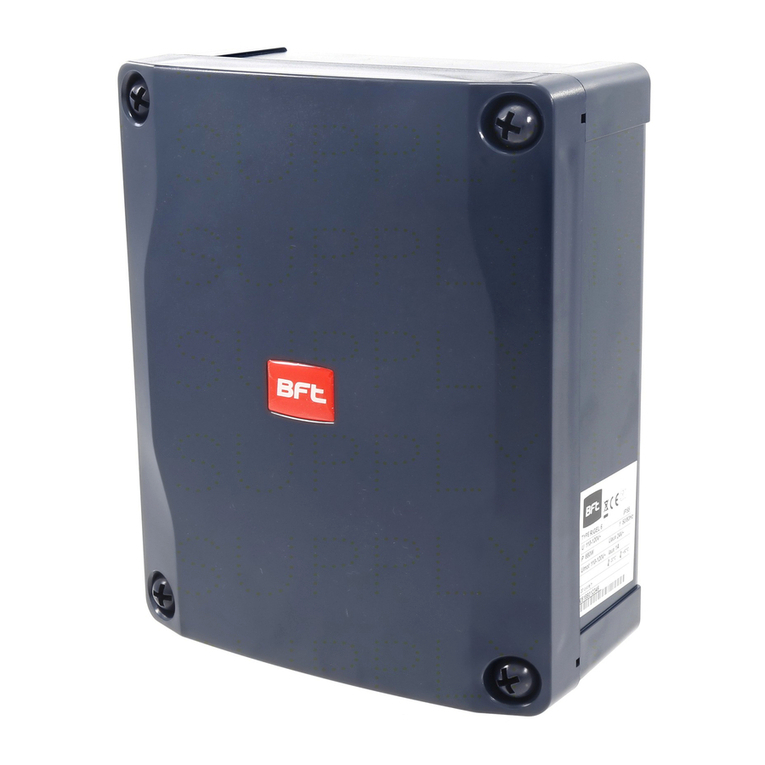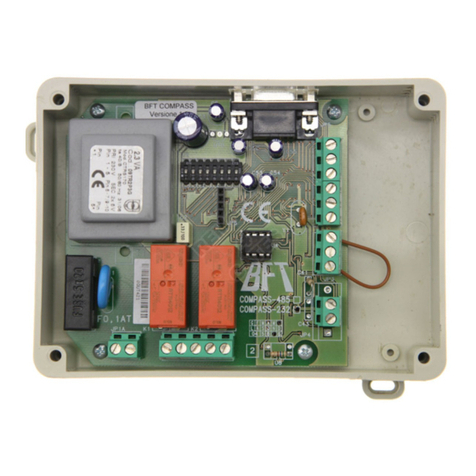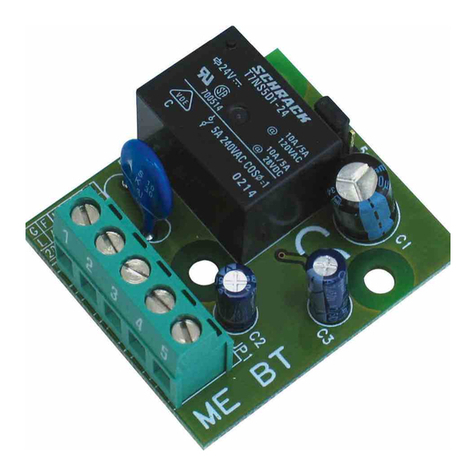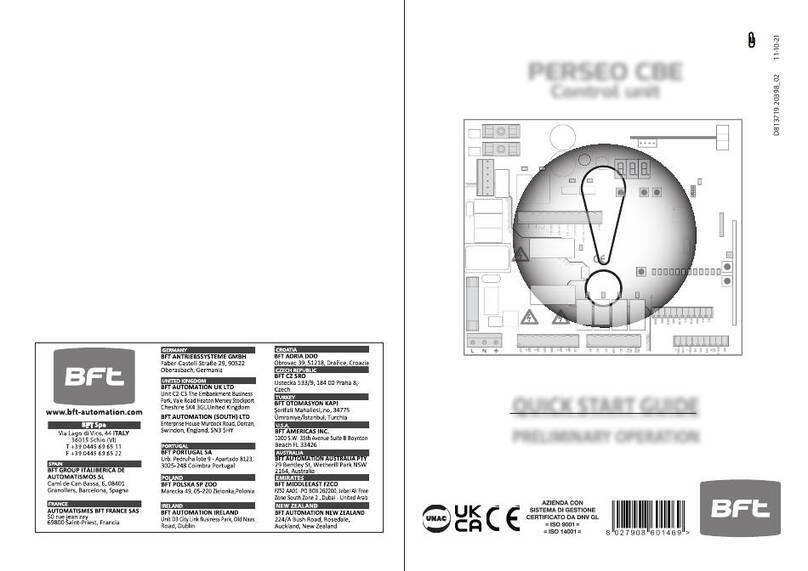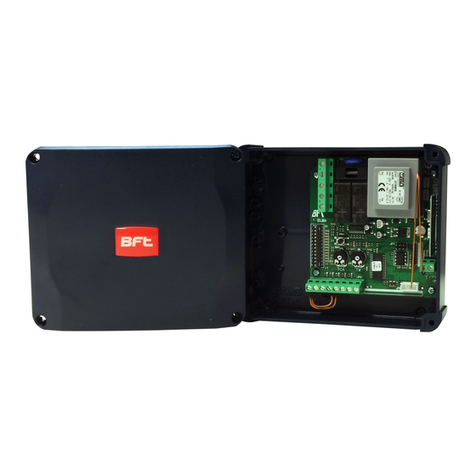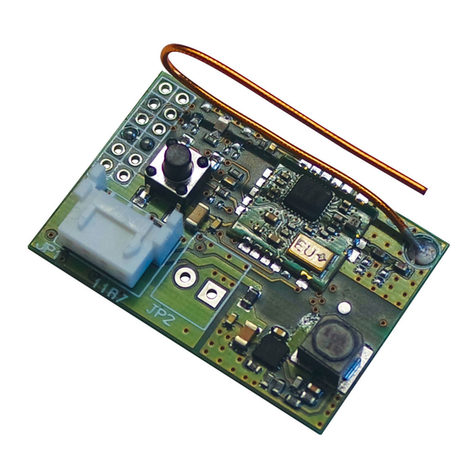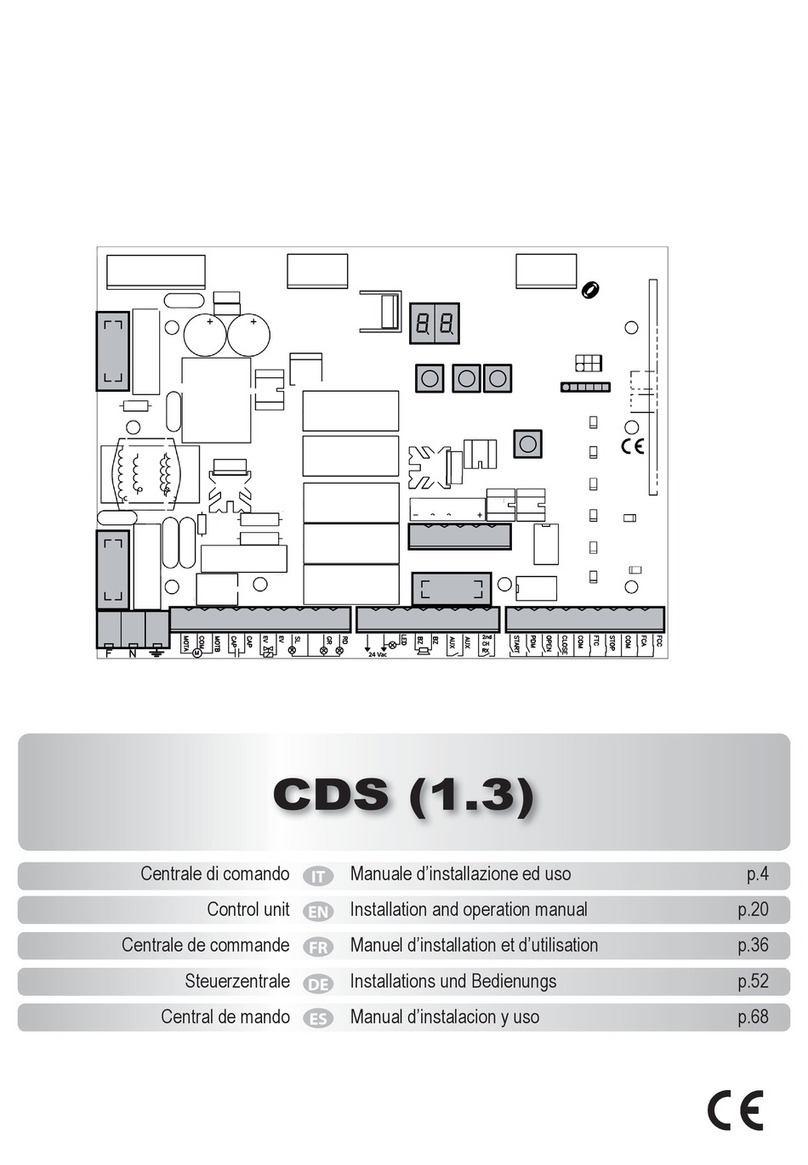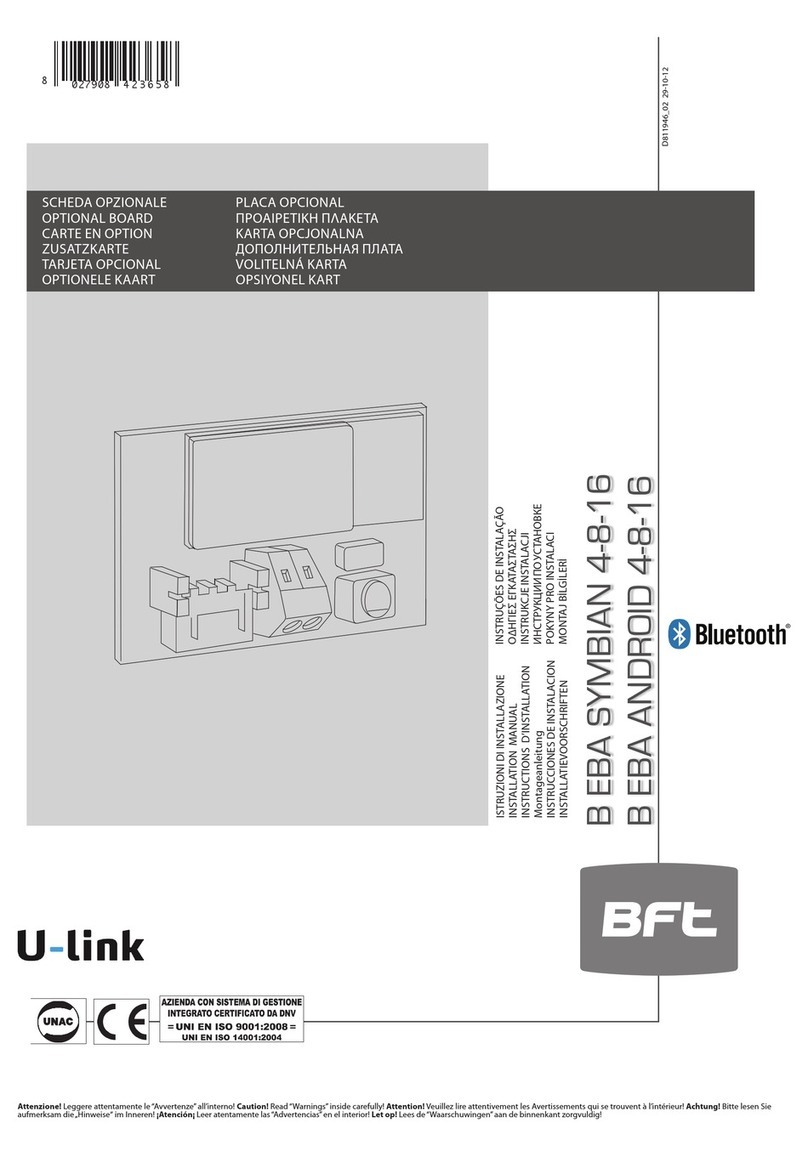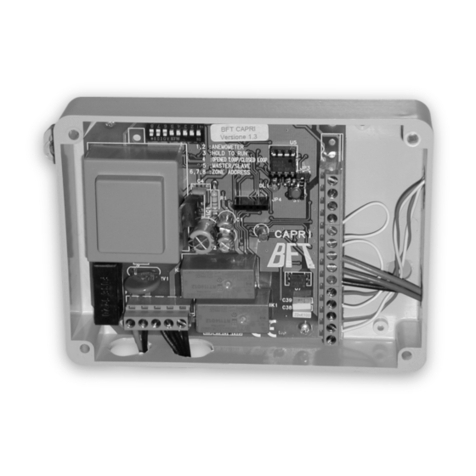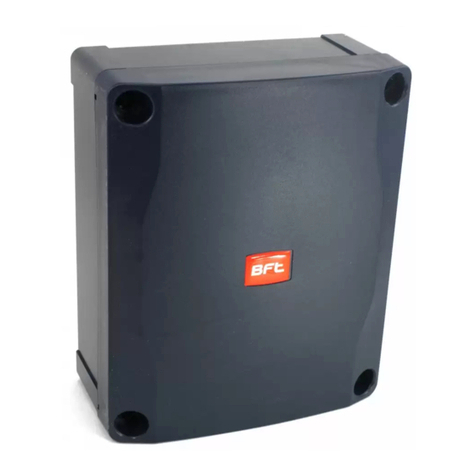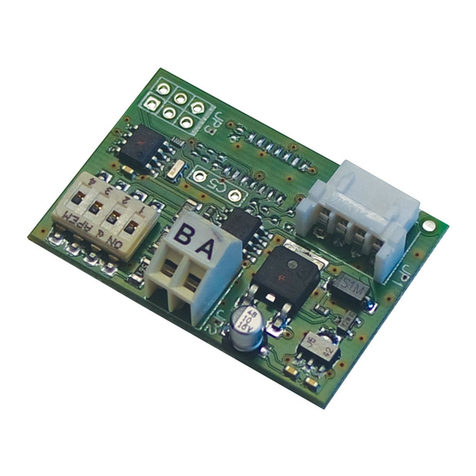
D811199A Ver. 02 - 5
D
Indem wir Ihnen für den Vorzug danken, den Sie diesem Produkt
entgegengebracht haben, ist die Firma sicher, daßSie von diesem die
für Ihren Gebrauch notwendigen Leistungen erhalten werden.
Lesen Sie aufmerksam die Broschüre “WARNUNGEN”und die
“GEBRAUCHSANWEISUNG”, die diesem Produkt beigelegt sind und
die wichtige Hinweise betreffend die Sicherheit, die Installation, den
Gebrauch und die Wartung liefern.
Dieses Produkt entspricht den anerkannten Regeln der Technik und
der Sicherheitsvorkehrungen. Wir bestätigen, daßes den folgenden
europäischen Vorschriften entspricht: 89/336/EWG, 73/23/EWG
(geändert durch die Richtlinien 91/263/EWG, 92/31/EWG und 93/68/
EWG).
1) ALLGEMEINES
Die Steuerung Mod. POLLUCE 2M ist den Betrieb von einem oder zwei
Antrieben der Serie ARM2 geeignet, die für die Automatisierung von
Kipptore verschiedener Typen geplant wurden. Die Steuerung kann
wie bolgt untergebracht werden:
- am Antrieb selber, bei Mod. ARM2 (Fig. 1)
-für Wandmontage (Fig. 2), bei Mod.ARM2 SQ ohne Steuerung
Für den Fall, das man ein Garagen Kipptor mit zwei Antrieben
automatisieren will, sind zwei zusammenstellungen möglich:
1Stk ARM2 + 1Stk ARM2-SQ oder
2 Stk ARM2-SQ + 1Stk POLLUCE 2M Steuerung für Wandmontage.
2) TECHNISCHE DATEN
Betriebsspannung: 230V ±6% 50/60Hz (*)
Leerlaufstrom: 150 mA(variiert mit dem Zubehör)
Höchstlast des Motors: 2 x 300W
Speisung der Zubehörteile: 24Vac ±20%
Spitzenstrom für Zubehörteile: 0.25A (6VA)
Betriebstemperatur: -20 bis +60°C
Max. Anzahl der Vorgänge in 24 Std.: 40
Automatische Schließzeit TCA: einstellbar 0 ÷90 Sek.
Lauf TW: einstellbar 0 ÷40 Sek.
Zeitgesteuertes Innenlicht: 230V - 25W max. - 90 Sek.
Blinkleuchte: 230V - max 40W
(*) Bezüglich der Speisung mit 110V siehe Absicherung in Fig.1 - 2
3) FUNKTIONSLOGIK
START: Vier-Schritt-Logik: (DIP5 OFF)
Tor geschlossen: öffnet
in Öffnung: hält an und schaltet die TCA
ein, soweit aktiviert
Tor geöffnet: schließt
in Schließung: hält an und schaltet TCA
nicht ein
nach Stop: geht in Öffnung
START: Zwei-Schritt-Logik: (DIP5 ON)
Tor geschlossen: öffnet
in Öffnung: hält an und schaltet die
TCA ein, soweit aktiviert
Tor offen: schließt
in Schließung: öffnet
nach Stop öffnet
STOP: Anhalten. Hält das Tor bis zu neuem Start an.
PHOT: Eingang Lichtschranken wählbar mittels DIP3
SWO: Bei Ende des Öffnungsvorganges bleibt das Tor stehen
SWC: Bei Ende des Schließvorganges bleibt das Tor stehen.
SCA: Kontrolleuchte “Tor geöffnet” bei geschlossenem
Tor: aus
beim Öffnungsvorgang: an
bei geöffnetem Tor: an
beim Schließvorgang : blinkend
4) DIP-SCHALTER-EINSTELLUNG
DIP1: Schnellschließung (SCL)
ON Wenn man die Lichtschranke sowohl beim Eintritt als auch beim
Austrittvollständig durchschritten hat, schließt sich dasTor automatisch
wieder, ohne das Ende der TCA abzuwarten. Es wird empfohlen, diese
Funktion zu benutzen, falls die Sicherheitsbedingungen der Anlage die
Aktivierung des DIP3-ON erlauben (Lichtschranken nur beim
Schließvorgang aktiv).
OFF: Funktion deaktiviert.
DIP2:Blockiert die Impulse beim Öffnungsvorgang (IBL)
ON: Nimmt während der Öffnungsphase keine START-Befehle an.
OFF: Nimmt während der Öffnungsphase START-Befehle an.
DIP3:Lichtschranken beim Öffnungsvorgang (FCH)
ON: Lichtschranken nur beim Schließvorgang aktiviert.
OFF: Lichtschranken beim Öffnungs- und Schließvorgang aktiviert.
DIP4:Dauer der automatischen Schließung (TCA)
ON: Automatische Schließzeit aktiviert (einstellbar von 0 bis 99 Sek.
mit Trimmer TW)
OFF: Automatische Schließzeit nicht aktiviert.
DIP5:Steuerlogik (2S/4S)
ON: 2-Schritt-Logik ist aktiviert (siehe Absatz Start).
OFF: 4-Schritt-Logik ist aktiviert (siehe Absatz Start).
DIP6:Nicht verwendet (Immer auf OFF stehen lassen)
5) EINSTELLUNG TRIMMER
TCA Stellt die automatische Schließzeit ein, nach deren Ablauf sich
das Tor automatisch schließt. (einstellbar von 0 bis 90 Sek.).
TW Stellt die Betriebszeit des Motors ein, nach deren Ablauf der Motor
abschaltet (einstellbar von 0 bis 40 Sek.). Erlaubt die Abschaltung des
Motors, falls aus irgendeinem Grund der Endschalter nicht erfasst wird.
6) EINSTELLUNG DES MOTORDREHMOMENTS
Die Steuerung Mod. POLLUCE 2M ist mit einem Transformator
versehen,derauch die Einstellung des elektrischen Motordrehmoments
erlaubt.
GEFAHR: An den Transformatorklemmen ist Netzspannung
vorhanden. Für jeden Eingriff in die Anlage die Netzspannung
ausschalten. Um die Drehmomentssteckdose einzustellen, den
Schutz am Transformator abnehmen und daran denken, ihn
wieder anzubringen.
Die Einstellung wird durchgeführt, indem die Verbindung “55”des
Transformators in eine der 4 Abgriffe “T1-T2-T3-T4”- wie in Fig. 1 - 2
gezeigt - umgesteckt wird.
Falls das Kipptor zuviel Reibung aufweist, was der notwendigen
Anstrengung zur manuellen Öffnung des Tores zu entnehmen ist, die
Auswuchtung überprüfen oder die notwendige Wartung zu ihrer
Beseitigung durchführen.
ACHTUNG: Eine übermäßige Einstellung des Drehmoments kann
die Quetschungsgefahr erhöhen.
Andererseits kann eine unzureichende Einstellung des
Drehmoments keinen korrekten Ablauf des Öffnungs- oder
Schließungsvorganges garantieren.
7) ANSCHLÜSSE KLEMMBRETT POLLUCE 2M (Fig. 3)
JP14
1-10 Einphasig e Betriebsspannung 230V ±6% 50/60Hz (1=L/10=N)
2-5 Nicht benutzt
3-4 Kondensator Motor M1
11-12-13 AnschlußMotor M1 (12 gemeinsam, 11-13 Betrieb)
6-7 Kondensator Motor M2
14-15-16 AnschlußMotor M2 (15 gemeinsam, 14-16 Betrieb)
8-17 Anschlußzeitgesteuerte Innenleuchte (max. 25W)
9-18 AnschlußBlinkleuchte 230V (max. 40W)
JP7
25 Gemeinsame Steuerungsklemme (Äquivalent zur Klemme 19)
19-20 Druckknopf Start (öffnet-schließt mit Arbeitskontakt)
19-26 Blockierungsdruckknopf (Ruhekontakt).
Wenn nicht gebraucht, überbrückt lassen.
19-21 Eingang Lichtschranke oder Sicherheits druck leiste
(Ruhekontakt).Wenn sie nicht benutzt wird, überbrückt lassen.
19-22 AnschlußSchließung (SWC) Endschalter
19-27 AnschlußÖffnung (SWO) Endschalter
28-23 Ausgang 24Vac 0.25A max (6VA) (Speisung Lichtschranke
oder andere Vorrichtungen)
23-29 Kontrolleuchte Anzeige “Tor geöffnet”24V (max. 3W)
24-30 EingangAntennefürFunkempfängerkarte(24Signal-30Mantel)
JP1
Stecksockel Funkempfängerkarte. 1-2 Kanäle
JP8
Ausgang zweiter Funkkanal der zweikanaligenEmpfängerkarte
(nicht montiert), (Potenzialfrei).
8) ANSCHLÜSSE KLEMMBRETT POLLUCE 2E (Fig. 4)
Es ist auch eine Version mit der Möglichkeit des Anschlusses eines
Elektroschlosses mit 12V verfügbar. Diese Version erkennt man am
Namen POLLUCE 2E.
In Fig. 4 ist nur der Teil des Klemmbrettes widergegeben, der den
Anschlußdes Elektroschlosses betrifft. Für alle anderen Anschlüsse
nehme man auf das Klemmbrett in Fig. 3 Bezug.
